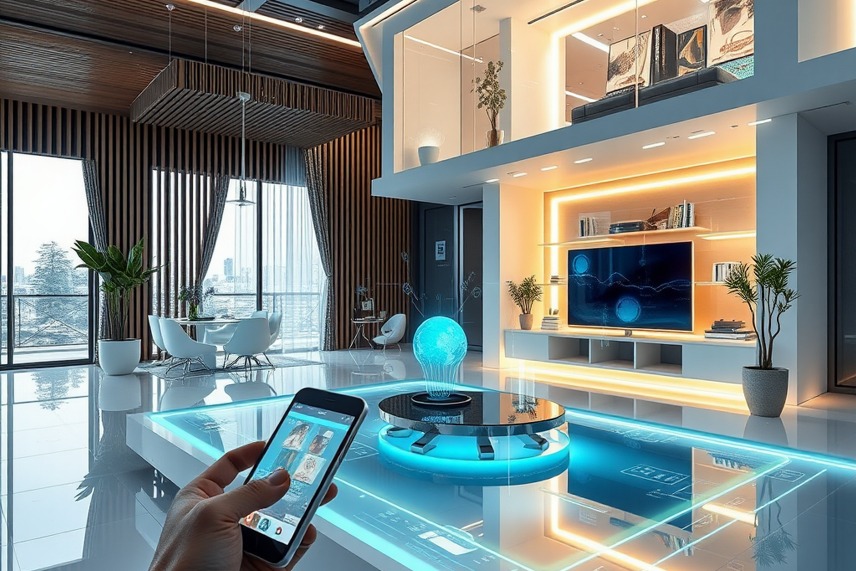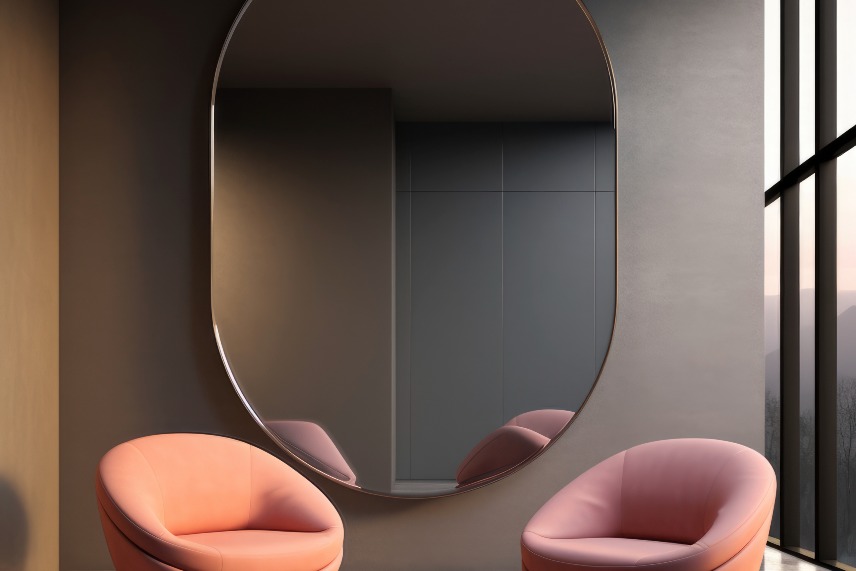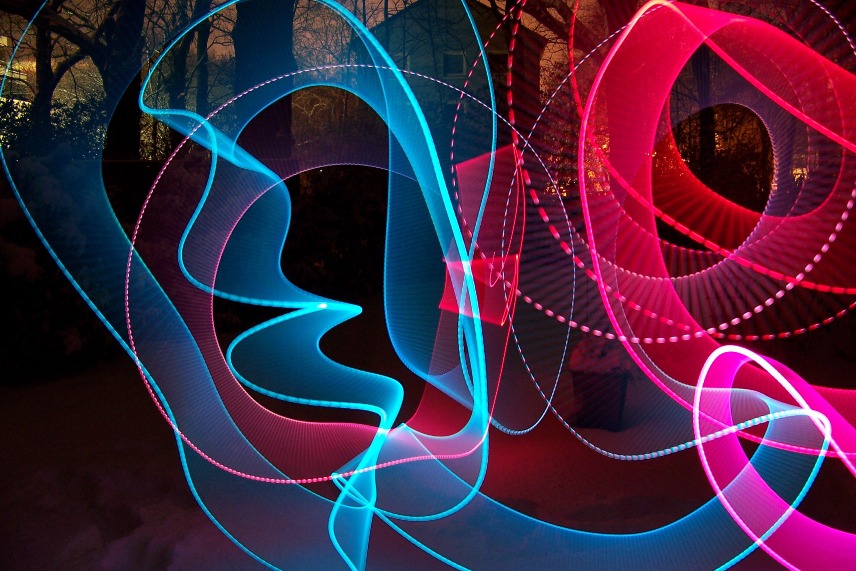- HOME PAGE
- / BLOG
BLOG

Smart Home Aesthetics: The Art of Integrating Smart Technology into Interior Design
One of the most powerful transformations in interior design for 2025 and beyond is the shift from technology being merely functional to becoming an aesthetic element. When we say “smart home,” the image is no longer a space filled with tangled cables, bulky devices, or plastic components disrupting the atmosphere.
The new smart home philosophy is clear:
“Technology must be invisible; it should exist without breaking the aesthetic harmony—ideally, enhancing it.”
Smart home systems are no longer external additions to a space; they are now the raw materials of interior design. From lighting to security, sound systems to climate control, energy management to embedded automation, every component is becoming seamlessly integrated into the rhythm of the space.
This comprehensive guide explores how smart technology enhances aesthetics, function, material harmony, user experience, and energy management, and reveals how various architectural styles adopt smart home innovations in 2025.
1. What Is Smart Home Aesthetics? (2025 Design Perspective)
Modern smart homes are not just technologically advanced—they speak a design language.
The foundational principles of this language are:
1.1. Invisible Technology
- Hidden LED channels
- Built-in speakers
- Sensor-activated cabinet lighting
- Wall-integrated touch surfaces
- Furniture with embedded wireless charging
“Invisible tech = peaceful aesthetics” has become a core principle.
1.2. Material + Technology Fusion
The strongest 2025 material trend is the integration of technology into:
- wood,
- concrete,
- natural stone,
- metal surfaces,
- textured walls.
Examples include a walnut media wall with concealed access panels, a marble console with built-in wireless charging, or lighting scenarios that move with linen-texture curtains.
1.3. Algorithmic Living
The home becomes an “algorithmic environment,” responding to the user’s rhythm.
- Morning light gradually brightening
- Warm tone-sur-ton lighting for evenings
- Film mode with optimized acoustic mapping
- Automated kitchen counter sensors
- AI-driven energy tracking and adjustment
Technology not only becomes invisible—it becomes emotionally adaptive.
2. Smart Lighting Aesthetics: Creating Spatial Scenarios with Light
Lighting is the heart of smart home design because it transforms the atmosphere of a space instantly.
2.1. The New Era of Linear LEDs
Notable 2025 lighting trends include:
- Recessed linear LED profiles
- “Light blade” wall cuts
- Organic ceiling washes
- Floor-level guidance strips
- 360° glow ambient lighting
All fully integrated into smart systems for aesthetic harmony.
2.2. Color Temperature Dynamics
In a smart home, light color is as important as brightness.
- Morning 5000K → mental activation
- Midday 4000K → productivity focus
- Evening 2700K → relaxation
- Film mode 2000K → candlelight effect
All transitions occur automatically.
2.3. Lighting + Material Harmony
Smart lighting elevates:
- the veining of marble,
- the grain of wood,
- the soft diffusion of concrete,
- the reflective nature of metal.
Minimalist hidden fixtures make spaces feel more premium, luxurious, and modern.
3. Smart Acoustics: Invisible Sound Design
Invisible speakers are one of the biggest smart home aesthetics trends of 2025.
3.1. In-Wall Speakers
Installed behind drywall, wood panels, or acoustic surfaces.
Never seen — only heard.
3.2. Ceiling Speakers
Arranged among spotlight fixtures, maintaining minimalist order.
The aperture size matches the lighting profile → visual harmony.
3.3. 3D Surround Scenarios
Smart systems provide algorithmic acoustic profiles for:
- movies,
- music,
- parties,
- relaxation,
- meditation.
4. Smart Furniture: The New Era of Technology-Integrated Design
Furniture is evolving from purely functional objects into technology surfaces.
4.1. Wireless Charging Tables & Consoles
Charging pads embedded beneath wood surfaces maintain aesthetic purity.
4.2. Sensor-Activated Cabinet Lighting
LED strips that turn on upon door movement add both practicality and a premium atmosphere.
4.3. Motorized Mechanisms
- TV lift systems
- Motorized kitchen modules
- Automated bed bases
- Built-in projector mechanisms
Smart furniture simplifies and visually cleans the environment.
5. Energy Efficiency & Sustainable Smart Home Strategies
Smart homes make sustainability both effortless and aesthetically seamless.
5.1. Smart Heating & Cooling Systems
These systems learn usage patterns and reduce energy consumption by 20–30%.
5.2. Solar Integration
Modern smart homes use solar production to automatically optimize:
- lighting,
- heating,
- appliances,
- storage.
5.3. Energy Monitoring Panels
Daily/weekly energy reports enhance user awareness.
Minimalist screens are placed discreetly within:
- niches,
- cabinetry,
- tablet docking units.
6. Smart Security with Aesthetic Sensitivity
Cameras and sensors are no longer visual distractions.
6.1. Micro Camera Modules
Much smaller lenses significantly reduce aesthetic impact.
6.2. Natural Material Embedding
Camera housings can be integrated into:
- wood ceiling slats,
- wall panels,
- curtain coves.
6.3. AI-Driven Behavioral Detection
Security becomes intelligent:
- detecting unusual motion
- open-door reminders
- smoke/water leak warnings
- baby/pet monitoring
All operating with quiet, invisible elegance.
7. Smart Home Aesthetics by Architectural Style
7.1. Minimalist Interiors
The most compatible style: hidden lighting, seamless speakers, clean volumes.
7.2. Japandi Soft Tech
Natural wood textures paired with soft lighting transitions and warm automation.
7.3. Industrial Style
Magnetic-touch smart panels and premium interpretations of exposed cable routes.
7.4. Luxury Modern
Stone-embedded IoT surfaces and glass-clad control panels.
8. Common Misconceptions About Smart Homes
“Smart homes need lots of screens.”
Wrong — screens are being minimized.
“Smart technology ruins aesthetics.”
The opposite is true:
Technology now preserves and enhances aesthetics.
“Smart homes require complex installation.”
70% of modern systems operate wirelessly.
9. Psychological Effects of Smart Home Living
- Reduced cognitive load due to fewer manual routines
- Lighting scenarios regulate mood
- Smart climate improves sleep quality
- Cleaner visuals → a calmer mind
- Transparent energy use → increased sense of control
Smart homes create comfort + aesthetics + mental minimalism.
10. Conclusion: The Future Is Not Just Smart — It’s Sensitive
The goal is not a home filled with gadgets, but a space that:
- understands the user,
- preserves the atmosphere,
- integrates technology aesthetically.
2025 smart home aesthetics teach us:
“The best technology is the one you don’t notice.”





